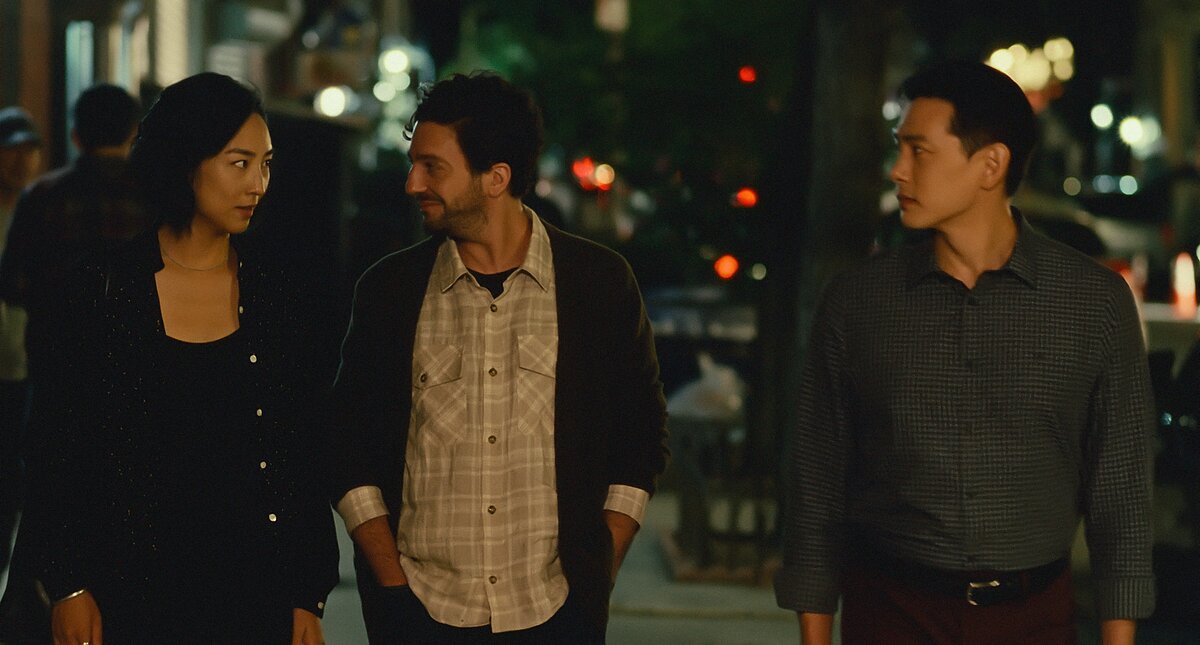Director Celine Song on Her Debut Film, “Past Lives”
Celine Song’s feature film debut, Past Lives, approaches the classic love triangle story from a refreshingly mature and deeply felt perspective to quietly devastating effect. Played by a sharp-as-ever Greta Lee, the film centers Nora Moon, an ambitious Korean American playwright who moves from Korea to Canada at a young age. In doing so, she leaves behind her childhood sweetheart, Hae Sung, who, as an adult, is played by a disarming Teo Yoo.
After losing touch with one another for 12 years, the two reconnect in the same way many of us did in the early 2000s–via Facebook. An ensuing Skype call prompts a long-distance situationship; while they are never explicitly in a romantic relationship, the commitment to and intimacy of their conversations toe beyond the niceties of a mere friendship. These are two people that know each other.
As time passes however, the two once again drift apart. Real life, away from the screen, pulls them asunder. Another 12 years go by; Hae Sung moves to Beijing and meets someone. Nora goes on a writing retreat and meets Arthur (an affable and charming John Magaro), who she soon marries (for love, but also a green card). We see Hae Sung and Nora in their respective cities (Song does a remarkable job of capturing the lived-in aura of both places), half a world apart from one another. That is, until Hae Sung decides to finally visit Nora in New York after a break up.
Based on events in Song’s own life, the drama and tension of the film lies in the profound melancholy of life moving on and the agony of possibilities. Told from the lens of immigration, these experiences are drawn even closer to the surface; past lives still haunt the present. Since premiering at Sundance this past January, the film has been dubbed the best movie of the year thus far and is already being teed up for Oscar nominations.
Ahead of the film’s nationwide release on June 23, we sat down with Celine Song to discuss the debut, her prior work as a playwright, and why the concept of alternative realities, past lives, and multiverses seems to have particular resonance within AAPI and immigrant storytelling in recent years. Past Lives is currently playing in select theaters in New York and Los Angeles.
CS: One of the main reasons why I thought this would be a cinematic story is because it spans decades and continents. That is a big part of the story itself; it’s not incidental. The cities are specific cities and are their own characters. It’s important that Hae Sung is from Seoul while Nora lives in New York. The story also involves a lot of aging and long stretches of time passing.
When I was transitioning from theater to film, something that I learned was that the things I have a ton of skill in in theater translate directly to film. At the end of the day, what theater comes down to is character and story and working through scenes and blocking and working with actors, right? That’s at the heart of making theater and is also the unique job of the director.
In film, what’s great is that you can choose where the camera goes so you actually have more freedom. You can put a camera anywhere but a live audience stays in one place. I really loved that. I also thought post-production was awesome because I already felt like a veteran when it came to editing; as you know, most of writing is really just editing. I’ve done that so much. What’s so fun about working with film is you get to edit the whole thing; you have sound, image, performance…everything!
The parts that were harder were where it was my first time doing something. There were some basic things that I just didn’t know. There was a moment when I went to my assistant director and was like, “Alright. You’re gonna teach me how to read the call sheet.” It’s learning the basic, technical aspects of filmmaking. But those things are actually easier to learn because you’re surrounded by people who’ve done it many times. It’s easy to pick up.
I found the transition to be nothing but wonderful and helpful. The biggest dragon I have to slay every time is my own certainty. Most of the time, I think it will work. But how would I know? I’ve never shot it. I’ve never shot anything before. In prep, for example, I was like, "I think I know…but I’m not sure. I hope it works!” As a director, you have to take all that uncertainty but look at 100 people—who are working with you and relying on you to know—in the face and, with confidence, say, “Yeah, it will work.” Even though in my brain, I’m still like, “Will it work?” A big part of being a director is just being a confidence beacon. I think that was the hardest part but I honestly loved it. I love the challenge of it.
CS: I think the multiverse thing is everywhere these days. Even the big franchises are obsessed with the multiverse. I think that has something to do with the internet or the way that we are now able to see the ways that everybody lives. We can see how the rich live, how the poor live, what it’s like to live in almost every country. I don’t think the multiverse is specifically about the AAPI community, although I do think that the theme could have specific resonances with AAPI and immigrant communities. Immigrants maybe have a different sense and deeper way of connecting to the idea of alternate realities because within their lives, there was an alternate reality that was quite real.
I think it also comes from all the ways sci-fi is becoming real; we’re conducting this interview over Zoom! The film touches on that too, with Hae Sung and Nora communicating over different platforms like Facebook and Skype as time passes.




